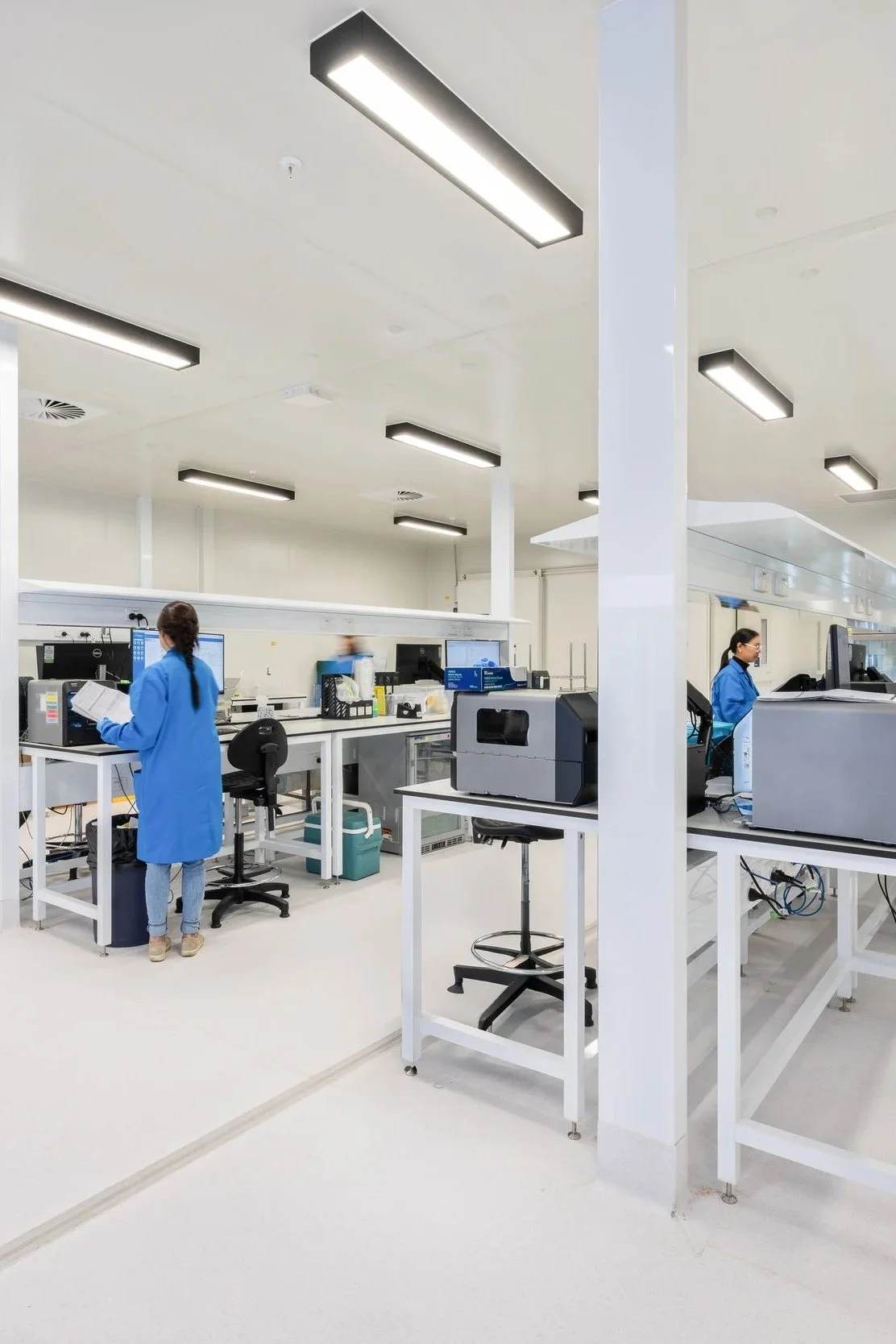The Digitally Connected Laboratory
Author: James Calder
Modern laboratory buildings are intricate ecosystems housing dozens of interconnected systems. Security monitoring and access control work alongside environmental controls that manage temperature, humidity, pressure, noise, vibration, and air quality. Gas utilities, water and waste systems, and multi-grade electrical power form the building's circulatory system. Critical safety infrastructure, fire suppression, alarms, and secure storage, protects people and assets. Specialised research infrastructure rounds out this complexity: vibration isolation platforms, cold rooms, animal facilities, imaging suites, and the sophisticated equipment they house.
Today, these largely independent systems funnel data through a Building Management System (BMS), with human operators providing oversight and maintenance. While functional, this approach leaves significant opportunities on the table.
From Static to Dynamic: The New Laboratory Reality
Laboratory usage has fundamentally shifted. Where facilities once operated on predictable, static schedules, today's labs demand dynamic flexibility to maximise utilisation of expensive space and equipment. This challenge is particularly pressing in Australia, where the government has identified science and research infrastructure as critical to the nation's future economic growth and national interest.
Researchers increasingly work remotely from experimental areas, choosing when and how to engage with physical lab resources. This transformation creates a disconnect: while usage patterns have become fluid and responsive, our management systems remain rigid. Booking platforms and sensor networks operate in isolation from the BMS, often requiring manual review, if they're monitored at all. The result is missed opportunities for optimisation and a reactive rather than proactive approach to facility management.
The Integration Opportunity
Australia's commitment to advancing its research capabilities is evident in the government's recent development of National Science and Research Priorities for 2024, which received over 480 submissions from the research community during public consultation. This reflects the growing recognition that efficient, digitally connected laboratories are essential for national competitiveness.
Advanced middleware now makes it possible to bridge the gap between static infrastructure and dynamic usage, connecting BMS data with booking systems and sensor networks. Real-time dashboards and intelligent reporting can emerge from this integration, dramatically enhancing facility productivity. AI tools can continuously scan for anomalies, inefficiencies, and optimisation opportunities, providing actionable insights to improve performance.
This digital convergence can be tailored through "physical rights management", a novel approach that customises system access and interfaces for different user types. By reducing friction for users while expanding accessibility, facilities can serve a broader range of research needs more effectively.
The Human Element: Complexity and Opportunity
Humans remain the most complex variable in this equation. In many laboratory buildings, human interaction is the crucial factor that brings disparate systems together into a cohesive whole. As technology enables greater flexibility in how we work with experimental systems, our facility management approaches must evolve accordingly.
The traditional spreadsheet-based management model is no longer adequate for today's complex laboratory environment. With research infrastructure investment critical to Australia's innovation economy and sovereign capability development, facility managers face an imperative to drive greater efficiency and sustainable resource use. The government's commitment to reviewing national research priorities every five years demonstrates the dynamic nature of modern research requirements and the need for adaptable infrastructure.
The opportunity is clear: integrate the static and dynamic, connect the human and digital, and transform laboratory facilities from reactive environments into proactive, intelligent ecosystems that enhance research productivity while optimising resource utilisation.

